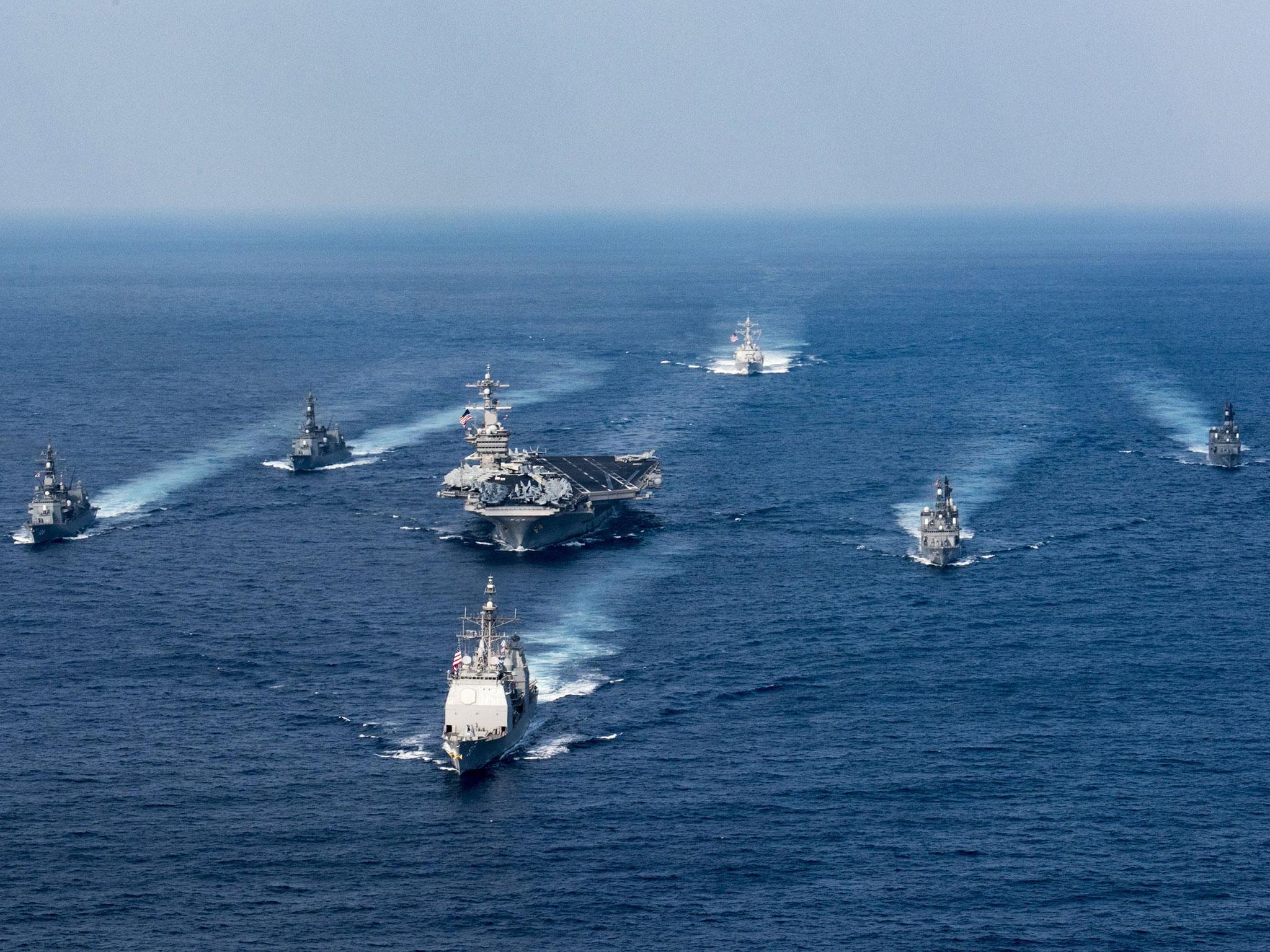White House defends portrayal of naval 'armada' sent to Korean peninsula
President Trump's declaration of seafaring might - intended to unsettle Pyongyang - badly undermined by fleet's diversion to Australia for pre-planned training exercise

Your support helps us to tell the story
From reproductive rights to climate change to Big Tech, The Independent is on the ground when the story is developing. Whether it's investigating the financials of Elon Musk's pro-Trump PAC or producing our latest documentary, 'The A Word', which shines a light on the American women fighting for reproductive rights, we know how important it is to parse out the facts from the messaging.
At such a critical moment in US history, we need reporters on the ground. Your donation allows us to keep sending journalists to speak to both sides of the story.
The Independent is trusted by Americans across the entire political spectrum. And unlike many other quality news outlets, we choose not to lock Americans out of our reporting and analysis with paywalls. We believe quality journalism should be available to everyone, paid for by those who can afford it.
Your support makes all the difference.President Donald Trump's administration has denied being misleading about a US carrier strike group's push toward the Korean peninsula, saying it never gave an arrival date and that the ships were still on their way.
When Trump boasted early last week that he had sent an “armada” as a warning to North Korea, the USS Carl Vinson strike group was still far from the Korean peninsula, and headed in the opposite direction.
The US military's Pacific Command explained on Tuesday that the strike group first had to complete a shorter-than-initially planned period of training with Australia but was now heading toward the Western Pacific.
“The President said that we have an armada going towards the peninsula. That's a fact. It happened. It is happening, rather,” said White House spokesman Sean Spicer.
He referred further queries about the deployment timetable to the Pentagon.
The US military initially said in a statement dated April 10 that Admiral Harry Harris, the commander of Pacific Command, directed the Vinson strike group “to sail north and report on station in the Western Pacific.”
But the strike group first headed elsewhere, On April 15, the US Navy even published a photo showing the Vinson transiting the Sunda Strait on its way to drills with Australia.
Reuters and other news outlets reported on April 11 that the movement would take more than a week. But the Navy, for security reasons, says it does not report future operational locations of its ships.
Defence Secretary Jim Mattis looked to address confusion over the issue on Wednesday, telling reporters travelling with him in the Middle East that the alteration in the Vinson's schedule had been disclosed in the interest of transparency.
“We are doing exactly what we said we were going to do. She will be on her way,” he said.
The strike group's commander, Rear Admiral Jim Kilby, said in a Facebook post this week that the deployment had even been extended 30 days “to provide a persistent presence in the waters off the Korean Peninsula.”
A Trump administration official told Reuters on Tuesday that Washington was concerned about the possibility of some kind of North Korean provocation around the time of the South Korean election on May 9.
“There is precedent going back to the 1990s and early 2000s where there are provocations timed to South Korean political events,” he said.
Reuters
Join our commenting forum
Join thought-provoking conversations, follow other Independent readers and see their replies
Comments